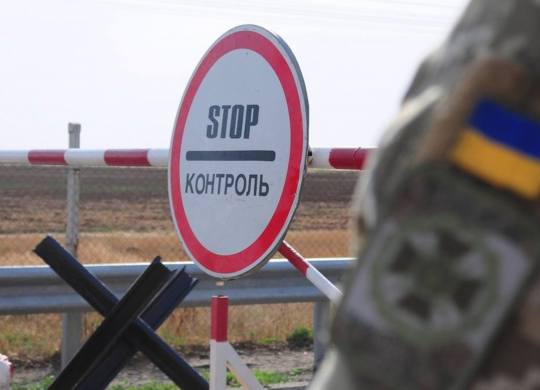
Russia is threatening nuclear weapons, so advice on surviving a nuclear explosion is becoming relevant. We share instructions: how to pack an alarming suitcase and how to act to reduce the damage from nuclear weapons.
How to prepare?
Find a shelter near your home, work, school, etc. The shelter can be both a basement and a room inside a building made of durable material: brick, cement, and earth stop radiation better than wood, plasterboard, or thin sheet metal.
As a shelter inside the building, it is better to choose a toilet, bath or storage room, located further from the external walls and roof. Because radioactive materials settle on the outer walls and roof. In a multi-story building made of brick or concrete, the most secure are closed rooms on the middle floors.
The most reliable shelter is the basement. Underground shelters can protect not only from radiation, but also from debris and blast waves.
Prepare an alarming suitcase. It is desirable that there are several of them in the places where you are most often: at home, at work. They should have a change of clothes, water in closed bottles, hermetically packaged products for long-term storage.
In addition, you should purchase:
• FFP2 or FFP3 respirators
• strong polyethylene bags,
• film/polyethylene raincoats
• tape (preferably reinforced)
• household rubber gloves
• glasses for eye protection
• nail polish remover or pure acetone
• map and compass.
• dosimeter
• potassium iodide
• radio receiver.
Radio may remain the only source of information if other communication networks are damaged by the explosion.
Pay attention! It is impossible to use potassium iodide "for prevention". The drug works only for a short period of time. If it is used casually, it can cause thyroid dysfunction. The drug will be effective 6 hours before possible exposure to radioactive iodine and 8 hours after such exposure.
The Ministry of Health told how to take potassium iodide correctly in case of need:
• children under 1 month — 16 mg;
• children from 1 month to 3 years old — 32 mg;
• children from 3 to 12 years old — 62.5 mg;
• adolescents 13-18 years old, adults up to 40 years old, pregnant and breastfeeding mothers — 125 mg.
Adults after 40 years of age are not recommended by the Ministry of Health to use potassium iodide, since at this age the thyroid gland almost does not accumulate radioactive iodine. However, if a woman in her 40s is pregnant or breastfeeding, she should take a dose of iodine to protect herself and her baby. Because during pregnancy and lactation, the thyroid gland of women is more active and can absorb more radioactive iodine.
What to do when hit?
In the event of a nuclear attack, you need to act quickly. In the event of a nuclear threat alert, immediately go to the nearest shelter and take your emergency suitcase with you.
If you are not in an underground shelter, do not approach the windows, stay as far as possible from the outer walls and roof.
Surviving near the epicenter of the explosion is possible only if you are in shelter.
If you are on the street during an explosion, you should immediately find shelter, or hide in a recess or behind any solid object that can protect you. It is better to lie face down, cover yourself with clothes, cover your head with a hood or hands.
If you are in a vehicle during an explosion, you must stop and crouch inside the car.
You need to be in a safe position until two shock waves, which sound like thunder, occur. You then have 10 minutes to get to the nearest shelter before the fallout starts.
What to do next?
As soon as you are in the shelter, you need to take off your dirty clothes and put them in a plastic bag. If possible, wash exposed areas of the body and hair with soap, if there is no water, wipe with wet wipes or a damp cloth. Wear clean clothes, avoid touching your eyes, nose and mouth unnecessarily. Respiratory organs should be closed with a respirator and DO NOT turn on ventilation.
While in the shelter, you can only eat food and drink water from sealed containers.
How long to stay in the shelter?
The minimum is 24 hours. The longer you stay in the shelter, the lower the radiation dose you will receive. But if you are in a bad shelter, and there is a better one nearby, move to it at least an hour after the attack.
The level of threat from the outside also depends on the distance to the epicenter of the explosion, the direction of the wind, and the power of the bomb. If you have a dosimeter, you can measure the radiation level yourself outside the shelter. An indicator of up to 30 microrentgens per hour (0.3 microsieverts per hour) is considered safe.
How and when can you go outside?
Before going outside, you need to put on a respirator, gloves, raincoat, glasses and shoe covers, put things in a bag. For better protection, you can wrap places that do not fit well with the body with tape.
The respirator must be changed every three hours, the raincoat - every 8-10 hours. They should be removed in safe rooms, preferably in basements.
If you get your hands or face dirty, wipe them with paper towels dipped in nail polish remover. If it starts to rain, take shelter immediately.
Keep yourselves!
Recommended articles
1 min
Krieg
1 min
Krieg
1 min
Krieg



